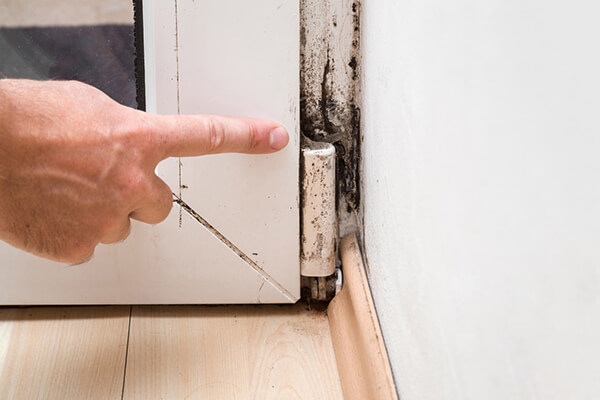Accessing Neighborhood Post Remediation Mold Testing Near Me
Accessing Neighborhood Post Remediation Mold Testing Near Me
Blog Article
Your Ultimate Guide to Message Mold Remediation Strategies
In the after-effects of mold and mildew problem, understanding exactly how to properly eradicate the mold and stop its reoccurrence is paramount for preserving a healthy interior environment. From selecting the appropriate cleaning and disinfecting methods to executing techniques for long-lasting mold prevention, each step in the removal journey plays an important function in making sure an effective end result.
Comprehending Post-Mold Removal Process
After completing the mold remediation procedure, it is critical to understand the post-mold removal strategies that are required to ensure a extensive and effective cleanup. When the mold and mildew has been removed, the following action involves cleansing and sanitizing the influenced locations to avoid any regrowth of mold. This includes making use of specialized cleansing agents to clean down surfaces and eliminate any kind of staying mold and mildew spores. It is necessary to dry the area entirely to dissuade the development of mold in the future (Post Mold Remediation). Proper air flow and dehumidification can help in this process.
Additionally, carrying out a final evaluation post-remediation is essential to ensure that all mold has been successfully gotten rid of. This inspection must include a thorough visual check as well as perhaps air sampling to validate the lack of mold and mildew spores in the air. If the inspection exposes any kind of remaining mold, extra removal may be required. Finally, informing occupants on preventive measures such as managing dampness levels and immediately dealing with any water leakages can aid preserve a mold-free environment.
Reliable Cleansing and Sanitizing Approaches

Avoiding Future Mold Development

Significance of Proper Ventilation
Proper ventilation plays an important role in stopping moisture build-up, a key aspect in mold development within indoor atmospheres. Efficient ventilation systems assist get rid of excess moisture from the air, minimizing the possibilities of mold and mildew spores finding the moisture they require to germinate and spread. Without appropriate air flow, indoor spaces can come to be a reproduction ground for mold, resulting in prospective wellness risks and structural damage.
By making sure proper air blood circulation, air flow systems can also aid in drying moist locations faster after water damage or flooding events, better discouraging mold development. Post Remediation verification. In rooms like shower rooms, cellars, attics, and kitchen areas where dampness degrees often tend to be greater, installing and preserving efficient ventilation systems is critical in avoiding mold and mildew invasions

Tracking and Maintenance Tips
Given the critical duty that correct ventilation plays in preventing mold development, it is essential to establish efficient monitoring and upkeep pointers to make sure the continued official statement capability of air flow systems. Routine evaluations of ventilation systems need to be performed recommended you read to check for any kind of indicators of blockages, leaks, or breakdowns that can hinder proper air movement. Monitoring humidity degrees within the residential property is likewise critical, as high moisture can contribute to mold and mildew growth. Mounting a hygrometer can help track moisture degrees and sharp home owners to any type of spikes that may call for focus. In addition, making sure that air filters are frequently cleansed or changed is necessary for maintaining the performance of the air flow system. Applying a timetable for routine maintenance jobs, such as duct cleansing and heating and cooling system examinations, can help prevent issues before they rise. By remaining conscientious and proactive to the condition of ventilation systems, homeowner can efficiently minimize the risk of mold regrowth and preserve a healthy interior setting.
Verdict
In verdict, post-mold remediation strategies are crucial for making certain a tidy and risk-free environment. Comprehending the process, carrying out efficient cleansing and decontaminating approaches, stopping future mold growth, preserving proper ventilation, and routine surveillance are all essential action in the removal procedure. By following these standards, you can efficiently eliminate mold and mildew and prevent its return, promoting a healthy and balanced living or working space for all occupants.
In the aftermath of mold and mildew problem, understanding how to properly eradicate the mold and mildew and prevent its reoccurrence is paramount for preserving a healthy interior atmosphere. Once the mold has actually been gotten rid of, the Web Site following step involves cleaning and disinfecting the impacted locations to protect against any regrowth of mold - After mold remediation. After removing noticeable mold and mildew development, it is vital to cleanse all surface areas in the affected area to eliminate any kind of continuing to be mold spores. To even more boost mold avoidance measures, it is vital to address underlying concerns that at first led to mold and mildew development.Given the essential function that correct ventilation plays in stopping mold development, it is necessary to develop effective surveillance and maintenance tips to make certain the continued capability of air flow systems
Report this page